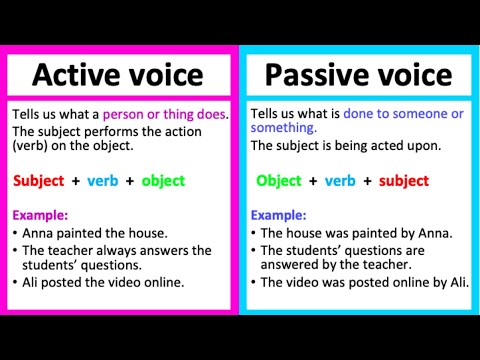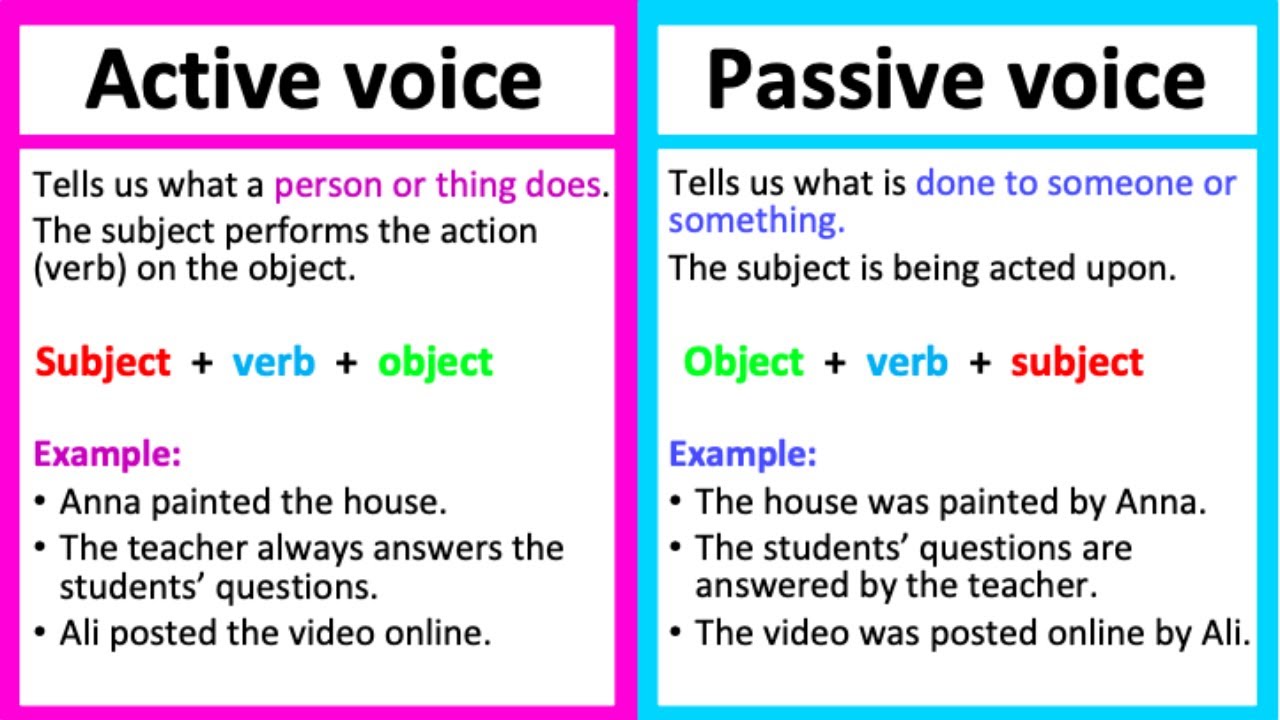An active voice is a powerful linguistic tool that injects life and energy into your writing. It brings forth a sense of dynamism, captivating readers and holding their attention from start to finish. By using active voice, you can effortlessly convey the subject of a sentence as the doer of the action, resulting in clarity and directness. No longer will your writing be bogged down by passive constructions that drain the vitality from your words. Instead, active voice empowers your sentences, giving them a vibrant and engaging quality that draws in readers and keeps them hooked. With active voice, your writing becomes a force to be reckoned with, enabling you to express your ideas with precision and impact. Say goodbye to dull and lifeless prose, and embrace the power of active voice to transform your writing into a captivating masterpiece. Whether you are crafting an essay, a story, or a persuasive argument, harnessing the potential of active voice will undoubtedly elevate your writing to new heights, leaving a lasting impression on your audience.

Understanding Active Voice
| Aspect | Description |
|---|---|
| Definition | The active voice is a grammatical construction where the subject of a sentence performs the action denoted by the verb. In active voice sentences, the subject is typically the doer of the action, while the object receives the action. |
| Clarity | Active voice sentences are generally considered more straightforward and easier to comprehend, as they provide a clear and concise representation of the action taking place. |
| Directness | Using the active voice allows for a more direct and engaging writing style. It emphasizes the subject and often brings the focus onto the person or thing performing the action, making the sentence more vibrant and engaging for the reader. |
| Efficiency | Active voice sentences are usually more efficient and concise than their passive voice counterparts. Active voice eliminates unnecessary words, making the sentence more direct and impactful. |
| Responsibility | Active voice sentences clearly attribute responsibility to the subject, allowing for more accountability and transparency in writing. This can be particularly useful in legal or persuasive contexts. |
| Common Usage | The active voice is extensively used in various forms of writing, including journalism, fiction, academic papers, and business communication. It helps convey information effectively and engages readers more effectively. |
Active & Passive Voice: Shaping Sentences with Action and Mystery
Understanding the Active Voice: A Guide to Effective Writing
When it comes to writing, one of the key elements that determines the quality and clarity of your work is the use of voice. Voice refers to the relationship between the subject and verb in a sentence, and it can be either active or passive. In this article, we will explore the concept of active voice, its importance in writing, and how to use it effectively.
1. Defining Active Voice: What is it?
The active voice is a grammatical construction in which the subject of a sentence performs the action expressed by the verb. Simply put, it means that the subject is doing the action, rather than receiving it. This results in clear, direct, and concise sentences that are easier to understand. For example:
Active Voice: “The cat chased the mouse.”
Passive Voice: “The mouse was chased by the cat.”
In the active voice sentence, the subject (cat) is performing the action (chased), while in the passive voice sentence, the subject (mouse) is receiving the action (was chased).
2. The Importance of Active Voice in Writing
Using active voice in your writing has numerous benefits. Firstly, it enhances clarity by making sentences more straightforward and easier to comprehend. Active voice sentences are generally shorter and contain fewer unnecessary words, which helps to convey your message more effectively. Additionally, active voice adds energy and engagement to your writing, as it creates a sense of immediacy and directness.
Furthermore, active voice allows you to clearly identify who is responsible for the action, making your writing more accountable and transparent. This is particularly crucial in academic and professional writing, where precision and accountability are highly valued.
3. Tips for Identifying Active Voice
Identifying active voice in a sentence is relatively simple. Look for the following characteristics:
- The subject is performing the action.
- The subject comes before the verb.
- The sentence is concise and clear.
By paying attention to these key elements, you can quickly identify whether a sentence is in active or passive voice.
4. Using Active Voice in Your Writing
Now that we have established the importance of active voice, let’s explore how to incorporate it into your writing:
- Start with the subject: Begin your sentence with the doer of the action to ensure a clear and active structure.
- Choose strong verbs: Opt for active, specific verbs that convey action and intention. This adds vigor and impact to your writing.
- Avoid excessive use of “to be” verbs: While “to be” verbs like “is,” “was,” or “are” are sometimes necessary, they can weaken the active voice. Try to replace them with more dynamic verbs whenever possible.
By following these tips, you can significantly improve the clarity and impact of your writing.
5. Conclusion
The active voice is an essential tool in effective writing. Its ability to enhance clarity, energy, and accountability makes it invaluable in various contexts. By understanding and applying the principles of active voice, you can become a more persuasive and engaging writer.
So, next time you sit down to write, remember to embrace the active voice and watch your sentences come alive with clarity and impact.

